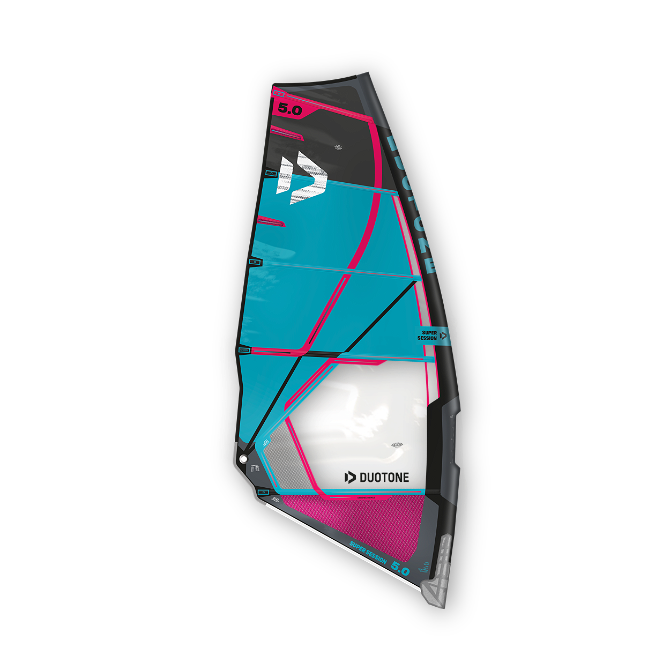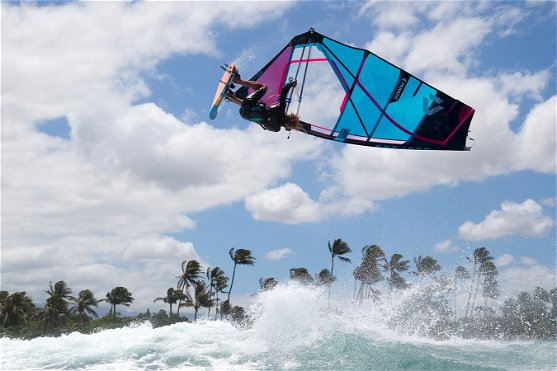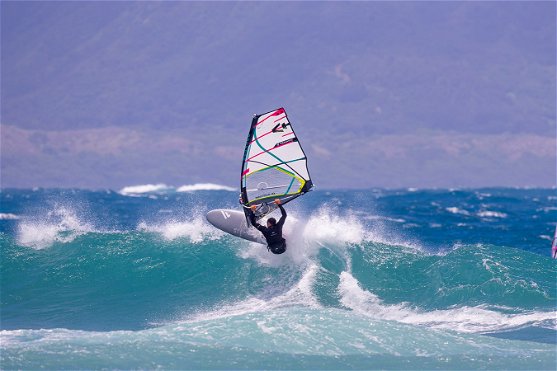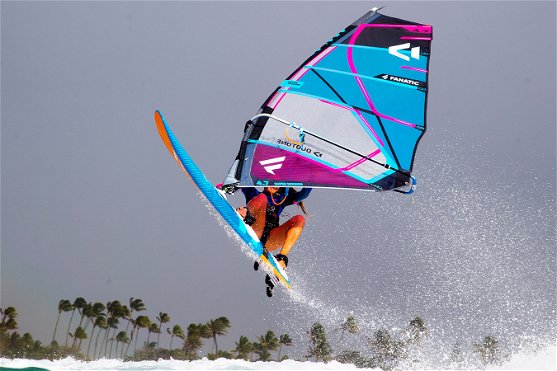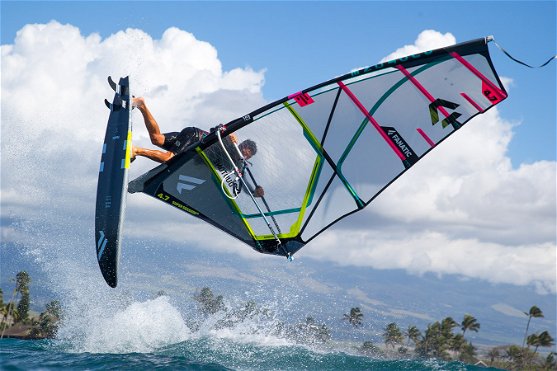Item-no. 14200-1207
Freewave boards are amongst the best selling on the market. The SUPER SESSION has been developed specifically for this category. It combines easy handling with a surprisingly immediate riding feel, giving the rider absolute control and confidence in all situations. With the SUPER SESSION, even the more brutal wind and wave conditions can be handled with confidence.
Freewave and Bump&Jump have everything that makes windsurfing so fascinating. This explains why this class is so popular. SUPER SESSION is the perfect sail for this, covering the wide range between flat water to waves. A power wave design with planing potential, speed and outstanding control. Rapid strokes, smooth jumps and full-throttle turns flow seamlessly into one another, whetting the rider’s appetite for endless SUPER SESSIONs.
Acceleration, draft position stability and handling are what sets the balanced, five-batten design from the competition. Because the draft position is further forward, the riding feel is more responsive and the profile remains stable even when the wind picks up. For even more control, the sizes 5.6 and up now feature more pronounced loose leech increasing the control in overpowered conditions. This is supported by the HOLLOW LOWER LEECH, preventing leech flutter and guaranteeing confident rig control. All this makes the SUPER SESSION a versatile, competitive Bump&Jump craft, especially under high winds and choppy conditions.
All SUPER SESSIONs are also available in the monofilm-free HD design. However, the extremely hard wearing mix of materials has its price, which we will of course make clear.
Freewave and Bump&Jump have everything that makes windsurfing so fascinating. This explains why this class is so popular. SUPER SESSION is the perfect sail for this, covering the wide range between flat water to waves. A power wave design with planing potential, speed and outstanding control. Rapid strokes, smooth jumps and full-throttle turns flow seamlessly into one another, whetting the rider’s appetite for endless SUPER SESSIONs.
Acceleration, draft position stability and handling are what sets the balanced, five-batten design from the competition. Because the draft position is further forward, the riding feel is more responsive and the profile remains stable even when the wind picks up. For even more control, the sizes 5.6 and up now feature more pronounced loose leech increasing the control in overpowered conditions. This is supported by the HOLLOW LOWER LEECH, preventing leech flutter and guaranteeing confident rig control. All this makes the SUPER SESSION a versatile, competitive Bump&Jump craft, especially under high winds and choppy conditions.
All SUPER SESSIONs are also available in the monofilm-free HD design. However, the extremely hard wearing mix of materials has its price, which we will of course make clear.
CRISP FEELING
Higher and forward oriented draft position makes for a crisp, direct yet light feeling
XPLY PLUS
Laminate (100/150 micron) with the lowest stretch and best UV- and puncture resistance on the market
TRI PLY
Tri Ply foot panel (150 micron): additional 3rd thread direction increases rip-stop ability by 30%
HOLLOW LOWER LEECH
Hollow Lower Leech (scooped leech outline) stabilises the profile right above the boom and prevents leech fluttering
Epoxy Battens
Unbreakable Epoxy Battens
iROCKET 2.0
Factory calibrated individual batten tensions using a torque wrench
AVAILABLE IN HD
Also available in a monofilm-free HD-construction
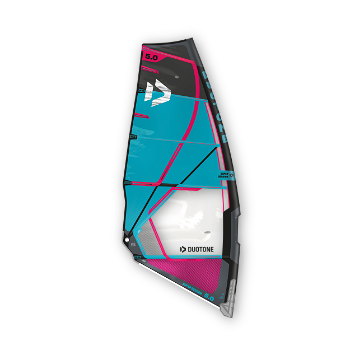
Wind Range
PLANING
Wind Range
STABILITY
Draft & Feeling
FORWARD / DIRECT
Draft & Feeling
CENTERED / SOFT
Range Of Use
DOWN THE LINE
Freestyle Ability
NEW SCHOOL
Freestyle Ability
CLASSIC
SIZE
BOOM MAX (CM)
VTS TAIL TENSION
LUFF MAX (CM)
VARIO TOP
BATTENS
WEIGHT (KG)
MAST TYPE (BEST/ALT.)
MAST GEO (BEST/ALT.)
MAST LENGTH (BEST/ALT.)
Reviews
Any comments or questions? Here you’ll find first hand R&D / rider Information.
The more info you provide, the more specific the advice/help will be. Please let us know:
Your skill level
Your body weight and size
Mast(s) you plan on using with the sail
Board(s) you are using
Conditions/spots you are sailing at
Please note: To help as many people as possible follow the thread, the forum language is English only.
:grayscale(false):quality(10):blur(20))

